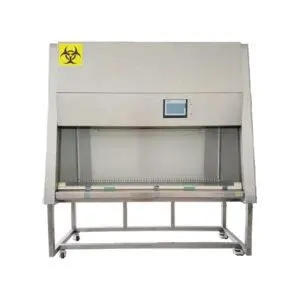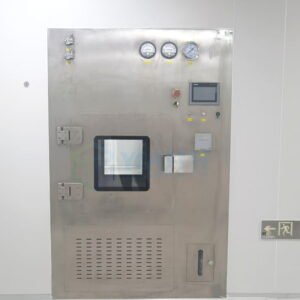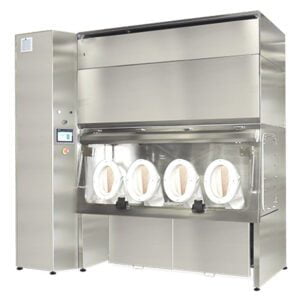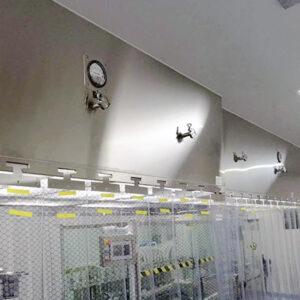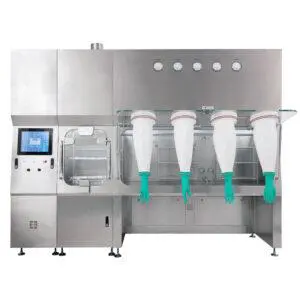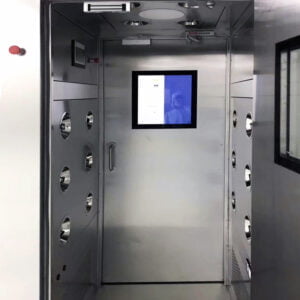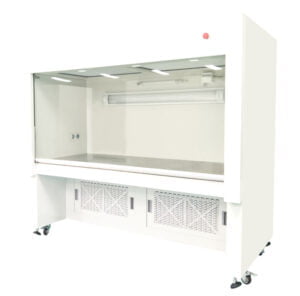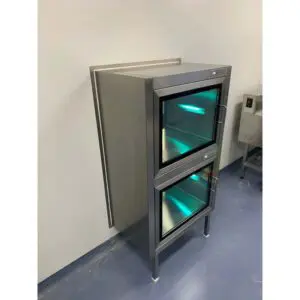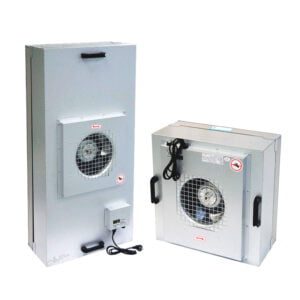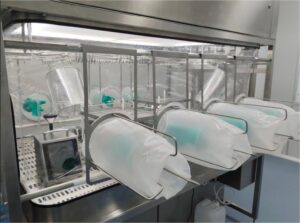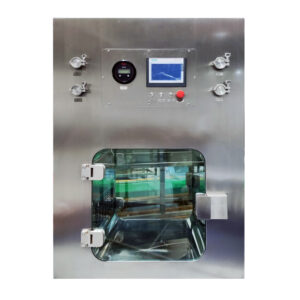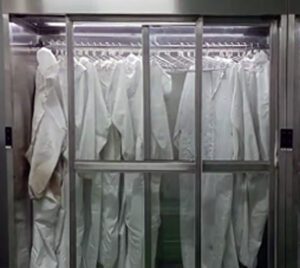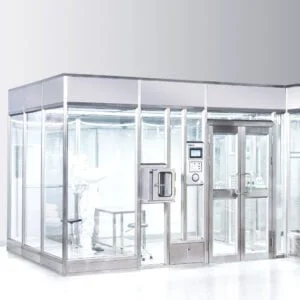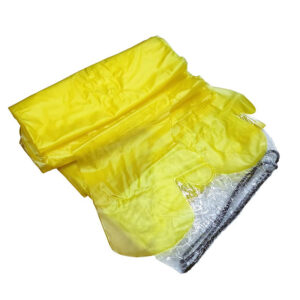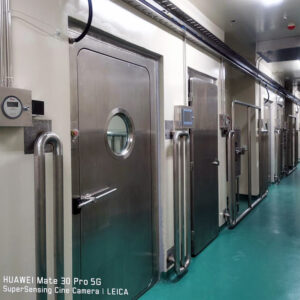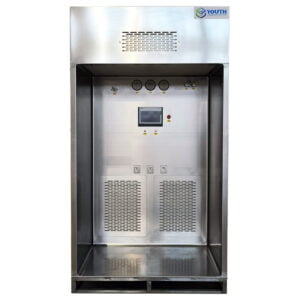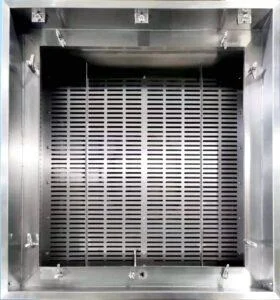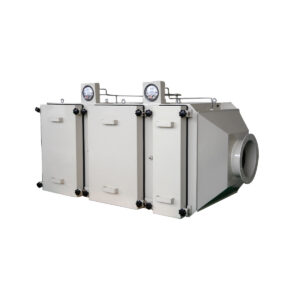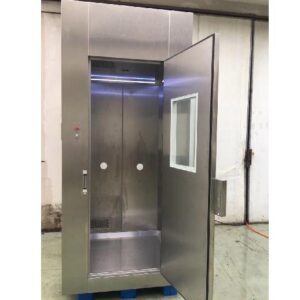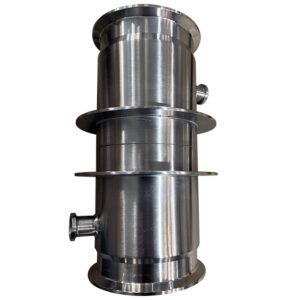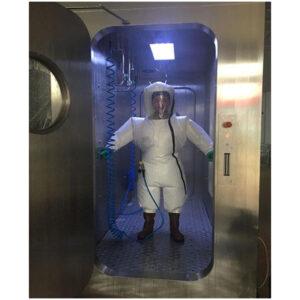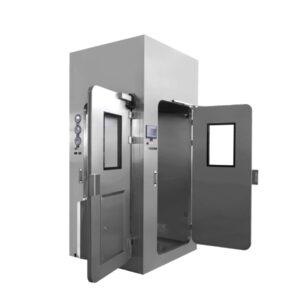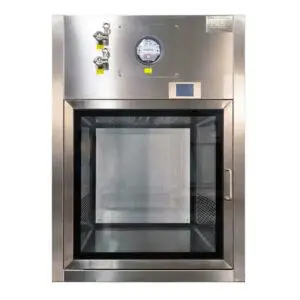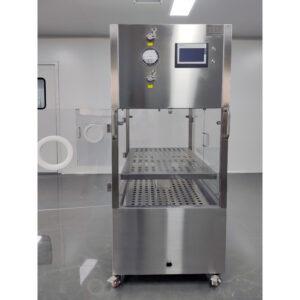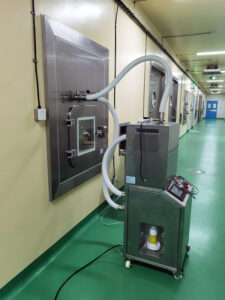HEPA filtration systems play a crucial role in maintaining sterility within test isolators, ensuring the integrity of pharmaceutical and biotechnology processes. As the demand for clean and controlled environments continues to grow, understanding the key facts about HEPA filtration in sterility test isolators becomes increasingly important for industry professionals and researchers alike.
In this comprehensive article, we'll explore the fundamental principles of HEPA filtration, its application in sterility test isolators, and the critical factors that contribute to its effectiveness. From the mechanics of particle capture to the latest advancements in filtration technology, we'll delve into the essential aspects that make HEPA filtration an indispensable component of modern sterility testing procedures.
As we navigate through the intricacies of HEPA filtration systems, we'll uncover the benefits they offer in terms of contamination control, regulatory compliance, and overall product quality. We'll also examine the challenges faced in implementing and maintaining these systems, providing insights into best practices and innovative solutions.
HEPA filtration systems are the gold standard for air purification in sterility test isolators, capturing 99.97% of particles as small as 0.3 microns in size.
Let's embark on this journey to unravel the complexities of HEPA filtration in sterility test isolators and discover why it remains a cornerstone of aseptic processing in the life sciences industry.
What is HEPA Filtration and How Does it Work in Sterility Test Isolators?
HEPA filtration is a critical component of air purification systems used in sterility test isolators. These specialized filters are designed to remove particulate matter from the air, ensuring a clean and controlled environment for sensitive procedures.
In sterility test isolators, HEPA filters work by forcing air through a fine mesh that traps harmful particles. This process involves multiple mechanisms, including interception, impaction, and diffusion, which collectively contribute to the filter's high efficiency.
The effectiveness of HEPA filtration in sterility test isolators lies in its ability to capture a wide range of particle sizes, from large dust particles to microscopic bacteria and viruses. This comprehensive filtration is essential for maintaining the sterile conditions required for accurate and reliable testing.
HEPA filters in sterility test isolators can remove 99.99% of particles larger than 0.1 microns, providing an ultra-clean environment for critical processes.
| Particle Size (microns) | HEPA Filtration Efficiency |
|---|---|
| > 0.3 | 99.97% |
| 0.1 – 0.3 | 99.99% |
| < 0.1 | 99.95% |
The implementation of HEPA filtration in sterility test isolators involves careful design considerations to ensure optimal air flow and particle removal. Factors such as filter placement, air change rates, and pressure differentials all play crucial roles in maintaining the integrity of the sterile environment.
In conclusion, HEPA filtration serves as the backbone of contamination control in sterility test isolators, providing a reliable barrier against airborne particles and microorganisms. Its sophisticated mechanisms and high efficiency make it an indispensable technology for ensuring the sterility of pharmaceutical and biotechnology products.
Why are HEPA Filters Essential for Maintaining Sterility in Test Isolators?
The importance of HEPA filters in sterility test isolators cannot be overstated. These advanced filtration systems are the primary defense against airborne contaminants that could compromise the sterility of sensitive materials and processes.
HEPA filters are essential because they create a barrier between the external environment and the controlled space within the isolator. This separation is crucial for maintaining the integrity of sterility tests and preventing false positives or negatives that could result from environmental contamination.
Furthermore, HEPA filtration systems in sterility test isolators contribute significantly to regulatory compliance. Many pharmaceutical and biotechnology processes are subject to strict guidelines regarding air quality and particulate control, and HEPA filters are often a mandatory component in meeting these requirements.
HEPA filters in sterility test isolators can reduce the risk of contamination by up to 99.9999%, making them indispensable for critical sterility testing procedures.
| Benefit of HEPA Filtration | Impact on Sterility Testing |
|---|---|
| Particle Removal | Reduces false positives |
| Microbial Control | Enhances test reliability |
| Consistent Air Quality | Improves reproducibility |
| Regulatory Compliance | Ensures GMP adherence |
The use of HEPA filters in sterility test isolators also provides a level of standardization across different testing facilities. This consistency is vital for comparing results and ensuring that sterility tests are performed under equivalent conditions, regardless of location or specific isolator design.
In conclusion, HEPA filters are essential for maintaining sterility in test isolators because they provide a reliable, consistent, and highly efficient means of air purification. Their ability to create a controlled environment that meets stringent regulatory standards makes them an indispensable component in the pursuit of product safety and quality in the pharmaceutical and biotechnology industries.
How Do HEPA Filtration Systems Contribute to Contamination Control in Sterility Testing?
HEPA filtration systems play a pivotal role in contamination control within sterility test isolators. These sophisticated air purification devices are designed to create and maintain an ultra-clean environment, which is crucial for the accuracy and reliability of sterility testing procedures.
The primary function of HEPA filtration in contamination control is the removal of airborne particles, including dust, pollen, bacteria, and even some viruses. By continuously filtering the air within the isolator, HEPA systems significantly reduce the risk of introducing contaminants during the testing process.
Moreover, HEPA filtration systems contribute to contamination control by maintaining positive pressure within the isolator. This pressure differential prevents the ingress of unfiltered air from the surrounding environment, further enhancing the sterility of the testing area.
HEPA filtration systems in sterility test isolators can maintain a Class 100 (ISO 5) clean room environment, with fewer than 100 particles larger than 0.5 microns per cubic foot of air.
| Contaminant Type | HEPA Filtration Efficiency |
|---|---|
| Dust | > 99.9% |
| Bacteria | > 99.99% |
| Mold Spores | > 99.95% |
| Viruses | > 99.5% |
The continuous operation of HEPA filtration systems also helps in maintaining a stable and controlled environment within the isolator. This stability is essential for the reproducibility of sterility tests and ensures that results are not influenced by fluctuations in air quality or particulate levels.
In conclusion, HEPA filtration systems are integral to contamination control in sterility testing by providing a multi-faceted approach to air purification. Their ability to remove a wide range of contaminants, maintain positive pressure, and create a stable testing environment makes them indispensable in ensuring the integrity of sterility test results and, ultimately, the safety of pharmaceutical and biotechnology products.
What Are the Key Components of a HEPA Filtration System in Sterility Test Isolators?
A HEPA filtration system in sterility test isolators is composed of several critical components, each playing a vital role in maintaining air purity and ensuring the sterility of the testing environment. Understanding these key elements is essential for professionals working with or designing sterility test isolators.
The heart of the system is the HEPA filter itself, typically made of a pleated sheet of borosilicate glass fibers or similar materials. This filter is designed to capture particles through various mechanisms, including interception, impaction, and diffusion.
Surrounding the HEPA filter are several supporting components that enhance its performance and ensure the overall effectiveness of the filtration system. These include pre-filters to capture larger particles, fans or blowers to maintain airflow, and sealing mechanisms to prevent air bypass.
HEPA filtration systems in sterility test isolators often incorporate multiple stages of filtration, with the final HEPA filter capable of removing 99.99% of particles as small as 0.3 microns.
| Component | Function |
|---|---|
| Pre-filter | Removes larger particles |
| HEPA Filter | Captures fine particles and microorganisms |
| Fan/Blower | Maintains airflow through the system |
| Pressure Gauges | Monitors filter performance and airflow |
| Control System | Regulates airflow and monitors system parameters |
Another crucial component is the control system, which regulates airflow, monitors filter performance, and ensures that the isolator maintains the required air quality standards. This may include pressure gauges, airflow sensors, and electronic controls for adjusting system parameters.
In conclusion, the key components of a HEPA filtration system in sterility test isolators work in concert to provide a robust and reliable means of air purification. From the highly efficient HEPA filter to the sophisticated control systems, each element contributes to creating and maintaining the sterile environment necessary for accurate and dependable sterility testing.
How Often Should HEPA Filters Be Replaced in Sterility Test Isolators?
The frequency of HEPA filter replacement in sterility test isolators is a critical aspect of maintaining the system's effectiveness and ensuring the integrity of sterility testing procedures. While there is no one-size-fits-all answer, several factors influence the replacement schedule.
Typically, HEPA filters in sterility test isolators have a longer lifespan compared to those in general-purpose air purifiers due to the controlled environment in which they operate. However, regular monitoring and maintenance are essential to determine the optimal replacement time.
One of the primary indicators for filter replacement is the pressure drop across the filter. As the filter captures particles over time, the resistance to airflow increases, which can be measured and used as a guideline for replacement.
Industry standards suggest that HEPA filters in sterility test isolators should be replaced when the pressure drop across the filter reaches twice its initial value or after a maximum of 3-5 years, whichever comes first.
| Factor Affecting Replacement | Impact on Filter Lifespan |
|---|---|
| Particulate Load | Decreases lifespan |
| Operating Hours | Decreases lifespan |
| Environmental Conditions | Varies impact |
| Maintenance Practices | Increases lifespan |
Regular testing of filter integrity and efficiency is also crucial in determining the need for replacement. This may involve particle counting downstream of the filter or conducting leak tests to ensure the filter and its housing maintain proper sealing.
It's important to note that replacement schedules may vary depending on specific regulatory requirements, manufacturer recommendations, and individual facility protocols. Some organizations may opt for more frequent replacements as a precautionary measure, especially in critical applications.
In conclusion, while HEPA filters in sterility test isolators are designed for extended use, their replacement should be based on a combination of factors including pressure drop measurements, performance testing, and adherence to regulatory and manufacturer guidelines. Regular monitoring and a proactive approach to maintenance are key to ensuring the continued effectiveness of the filtration system and the reliability of sterility testing procedures.
What Are the Latest Advancements in HEPA Filtration Technology for Sterility Test Isolators?
The field of HEPA filtration for sterility test isolators is continually evolving, with new technologies and innovations emerging to enhance performance, efficiency, and reliability. These advancements are crucial for meeting the increasingly stringent requirements of pharmaceutical and biotechnology industries.
One of the most significant recent developments is the introduction of ultra-low penetration air (ULPA) filters, which offer even higher efficiency than traditional HEPA filters. ULPA filters can remove 99.9995% of particles 0.12 microns in size, providing an unprecedented level of air purity.
Another area of advancement is in filter media technology. New materials and manufacturing processes are being developed to create filter media with improved particle capture efficiency and lower pressure drop, leading to better performance and longer filter life.
Recent advancements in HEPA filtration technology have led to the development of filters that can capture nanoparticles as small as 0.1 microns with 99.9999% efficiency, surpassing traditional HEPA standards.
| Technology Advancement | Benefit for Sterility Testing |
|---|---|
| ULPA Filtration | Enhanced particle removal |
| Nanofiber Media | Improved efficiency |
| Smart Monitoring | Real-time performance data |
| Energy-Efficient Design | Reduced operating costs |
Smart monitoring systems are also becoming more prevalent in HEPA filtration for sterility test isolators. These systems use sensors and advanced algorithms to provide real-time data on filter performance, air quality, and system efficiency, allowing for proactive maintenance and optimization.
YOUTH has been at the forefront of these advancements, continuously innovating to provide cutting-edge HEPA filtration solutions for sterility test isolators and other critical applications.
In conclusion, the latest advancements in HEPA filtration technology for sterility test isolators are focused on improving efficiency, extending filter life, and providing more accurate monitoring and control. These innovations are crucial for maintaining the highest standards of sterility and contamination control in pharmaceutical and biotechnology processes.
How Do Environmental Factors Affect HEPA Filter Performance in Sterility Test Isolators?
Environmental factors play a significant role in the performance and longevity of HEPA filters within sterility test isolators. Understanding these factors is crucial for maintaining optimal filtration efficiency and ensuring the reliability of sterility testing procedures.
One of the primary environmental considerations is humidity. High humidity levels can affect the filter media, potentially leading to microbial growth or reduced efficiency. Conversely, extremely low humidity can cause static electricity build-up, which may impact particle capture.
Temperature is another critical factor. Extreme temperatures can affect the physical properties of the filter media and housing materials, potentially compromising their integrity or efficiency.
Studies have shown that HEPA filters perform optimally in environments with relative humidity between 40-60% and temperatures between 20-25°C (68-77°F).
| Environmental Factor | Impact on HEPA Filter Performance |
|---|---|
| High Humidity | Potential for microbial growth |
| Low Humidity | Static electricity build-up |
| High Temperature | Material degradation |
| Particulate Load | Reduced filter life |
The presence of chemical contaminants in the air can also affect HEPA filter performance. Certain chemicals may react with the filter media or housing materials, potentially degrading their effectiveness over time.
Particulate load is another crucial environmental factor. While HEPA filters are designed to capture particles, environments with exceptionally high particulate concentrations can lead to faster filter loading and reduced lifespan.
HEPA filtration systems designed for sterility test isolators must be capable of maintaining their performance across a range of environmental conditions. This often involves the use of pre-filtration stages, climate control systems, and robust monitoring to ensure consistent operation.
In conclusion, environmental factors such as humidity, temperature, chemical presence, and particulate load can significantly impact HEPA filter performance in sterility test isolators. Careful consideration of these factors in the design, operation, and maintenance of filtration systems is essential for ensuring reliable and consistent sterility testing results.
Conclusion
HEPA filtration systems are an indispensable component of sterility test isolators, playing a crucial role in maintaining the sterile environments necessary for accurate and reliable testing in pharmaceutical and biotechnology industries. Throughout this article, we've explored the key facts and considerations surrounding HEPA filtration in these critical applications.
We've learned that HEPA filters are capable of removing 99.97% of particles as small as 0.3 microns, with some advanced systems achieving even higher efficiencies. This level of filtration is essential for creating and maintaining the ultra-clean environments required for sterility testing.
The importance of HEPA filtration in contamination control cannot be overstated. These systems not only remove particulate matter but also contribute to maintaining positive pressure and stable environmental conditions within the isolator. This multi-faceted approach to air purification is crucial for ensuring the integrity of sterility tests and compliance with stringent regulatory requirements.
We've also explored the key components of HEPA filtration systems, from the filters themselves to the supporting hardware and control systems that ensure optimal performance. Understanding these components is essential for professionals working with or designing sterility test isolators.
The discussion on filter replacement highlighted the importance of regular monitoring and maintenance. While HEPA filters in sterility test isolators typically have a longer lifespan than those in general applications, their performance must be closely monitored to determine the optimal replacement time.
Advancements in HEPA filtration technology, such as ULPA filters and smart monitoring systems, continue to push the boundaries of what's possible in air purification. These innovations are crucial for meeting the ever-increasing demands of the pharmaceutical and biotechnology industries.
Finally, we examined the impact of environmental factors on HEPA filter performance, emphasizing the need for careful consideration of humidity, temperature, and other variables in the design and operation of sterility test isolators.
As the field of sterility testing continues to evolve, HEPA filtration systems will undoubtedly remain a cornerstone of contamination control. The ongoing development of more efficient, reliable, and intelligent filtration technologies promises to further enhance the capabilities of sterility test isolators, ultimately contributing to the production of safer and higher-quality pharmaceutical and biotechnology products.
In this rapidly advancing field, staying informed about the latest developments in HEPA filtration technology and best practices for its implementation in sterility test isolators is crucial for professionals in the life sciences industry. By leveraging the power of advanced HEPA filtration systems, we can continue to push the boundaries of what's possible in sterility testing and contamination control.
External Resources
HEPA Filtration system – Fantech – This resource provides details on Fantech's HEPA filtration systems, including their 3-stage filtration process, capture efficiency of 99.97% for particles 0.3 microns and larger, and various installation options such as duct-mounted and stand-alone models.
Clean Air: The Effectiveness of HEPA Filtration Systems in Healthcare – This article discusses the effectiveness of HEPA filters in healthcare settings, highlighting their ability to capture airborne particles, reduce the spread of disease, and eliminate allergens and odors.
What Is a HEPA Filter & How Does It Work? – ISO-Aire – This blog post explains the structure and functioning of HEPA filters, including the mechanisms of diffusion, interception, and impaction, and how they capture particles of various sizes.
10 Pros and Cons of HEPA Air Filters | We Care Plumbing – This article lists the pros and cons of using HEPA air filters, including their ability to destroy airborne pollutants, eliminate bacteria, reduce allergies, and improve the health of pets.
HEPA – Air Purification – Lennox – This page describes Lennox's Healthy Climate HEPA system, which uses hospital-grade filtration technology to remove contaminants, including a three-step filtration process and optional carbon canister for enhanced odor removal.
How HEPA Filters Work and Why You Need One – This article provides a detailed explanation of how HEPA filters work, their benefits for health, and why they are necessary for improving indoor air quality.
Related Contents:
- Compact Sterility Test Isolators for Small Labs
- Custom Sterility Test Isolators: Top 5 Designs 2025
- Half-Suit Sterility Test Isolators: Ergonomic Design
- PLC Control Systems for Sterility Test Isolators
- Flexible Wall Isolators: Cost-Effective Sterility Testing
- Glove Sterility Test Isolators: Essential Guide 2025
- Modular Sterility Testing Isolators: Flexible Solutions
- Multi-Chamber Sterility Test Isolators: Versatile Testing
- Bag-In/Bag-Out (BIBO) Systems: Operation and Maintenance Guide


